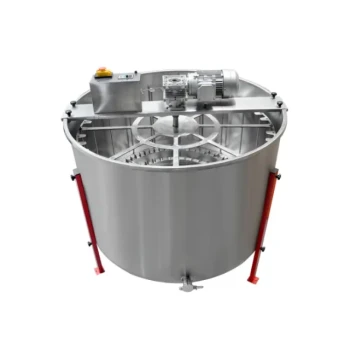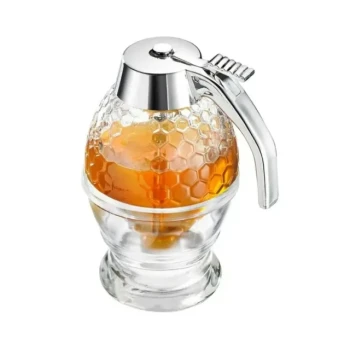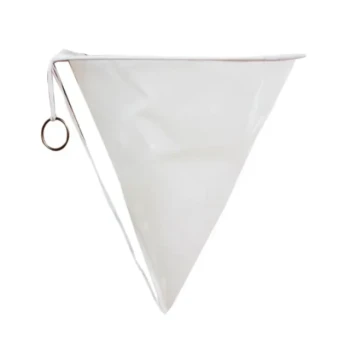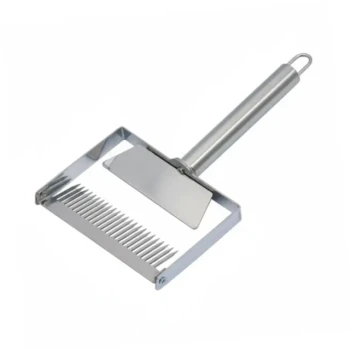Ultimately, an electric honey extractor is significantly faster than a manual one. While a manual extractor can take 15 to 20 minutes to process just a few frames, an electric model automates this labor-intensive process. The exact time varies based on the extractor's size and the honey's condition, but the primary benefit is a dramatic reduction in both time and physical effort for the beekeeper.
The core issue isn't just about the minutes spent per batch, but the overall efficiency of your honey harvest. The true value of an electric extractor lies in its ability to automate the most strenuous part of the job, allowing you to process much larger volumes of honey with minimal physical strain.
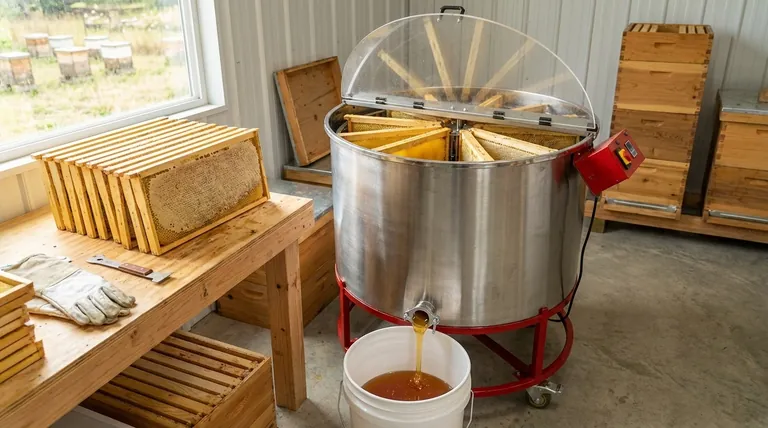
How Electric Extractors Create Efficiency
An electric honey extractor operates on a simple yet powerful principle. It uses an electric motor to do the work that you would otherwise do by hand, but with greater speed and consistency.
The Power of Centrifugal Force
At its heart, an extractor is a centrifuge. Frames of honeycomb are placed in a basket inside a drum, which is then spun at high speed. This spinning action creates a powerful centrifugal force that flings the honey out of the wax cells and onto the inner wall of the drum, where it drips down for collection.
Automation Eliminates Physical Labor
The defining feature of an electric model is its motor. Instead of continuous, tiring manual cranking, you simply flip a switch. This automation is what makes it possible to process a large number of frames without exhaustion, turning a physically demanding task into a supervisory one.
Consistent Speed for a Higher Yield
An electric motor provides a consistent and powerful spin that is difficult for a person to maintain manually. This steady, high-speed rotation ensures a more thorough extraction, often resulting in a higher honey yield and leaving the delicate wax combs cleaner and less damaged.
Key Factors That Influence Extraction Time
While always faster than manual methods, the precise speed of an electric extractor depends on several variables. Understanding these helps you optimize your harvest day.
Extractor Size and Capacity
Electric extractors are designed for various scales, with models holding anywhere from two to over 72 frames. A larger machine can process a much greater volume of honey in a single run, dramatically increasing the overall throughput for a medium or large-scale operation.
Honey Temperature and Viscosity
Warm honey is less viscous and flows far more easily than cold honey. Extracting in a warm room (around 85-95°F or 30-35°C) will significantly speed up the process, as the honey will exit the cells with less resistance.
The Number of Hives You Manage
The most critical factor is the size of your apiary. For a beekeeper with just one or two hives, the time savings might be a welcome convenience. For anyone with more than a couple of hives, an electric extractor shifts from a luxury to an essential piece of equipment for an efficient harvest.
Understanding the Trade-offs
The choice between manual and electric is a classic trade-off between initial cost and long-term efficiency.
Manual Extractors: Simplicity at a Cost
A hand-crank extractor is less expensive and doesn't require electricity, making it a viable entry point for hobbyists with one or two hives. However, the process is slow, physically demanding, and becomes a significant bottleneck as your apiary grows.
Electric Extractors: An Investment in Time
The higher upfront cost of an electric model is an investment in your time and energy. It drastically reduces the labor involved in extraction, minimizes the risk of comb damage through consistent speed, and provides the scalability needed to grow your operation without being overwhelmed.
Making the Right Choice for Your Goal
Selecting the right equipment comes down to a realistic assessment of your beekeeping operation and future ambitions.
- If you manage 1-3 hives: A manual extractor is a viable option, but a small electric model will transform your harvest day from a chore into a much more enjoyable process.
- If you manage more than 3 hives or plan to grow: An electric extractor is a necessary investment in efficiency that will quickly pay for itself in saved time and labor.
- If your primary focus is reducing physical strain: The choice is clear. An electric model eliminates the most strenuous part of the harvest, making beekeeping more accessible and sustainable.
Ultimately, choosing an electric extractor is about valuing your time and making your honey harvest a more productive and less exhausting experience.
Summary Table:
| Factor | Impact on Extraction Time |
|---|---|
| Extractor Size | Larger capacity = More frames processed per run = Faster overall harvest. |
| Honey Temperature | Warmer honey (85-95°F) flows faster, significantly reducing extraction time. |
| Number of Hives | Essential for efficiency with 3+ hives; prevents harvest from becoming a bottleneck. |
Ready to transform your honey harvest?
As a trusted wholesale supplier for commercial apiaries and beekeeping equipment distributors, HONESTBEE provides robust electric honey extractors designed for high-volume, efficient operations. Investing in the right equipment saves invaluable time and reduces physical strain, allowing you to scale your business effectively.
Contact HONESTBEE today to discuss your needs and discover how our wholesale-focused solutions can enhance your productivity and profitability.
Visual Guide
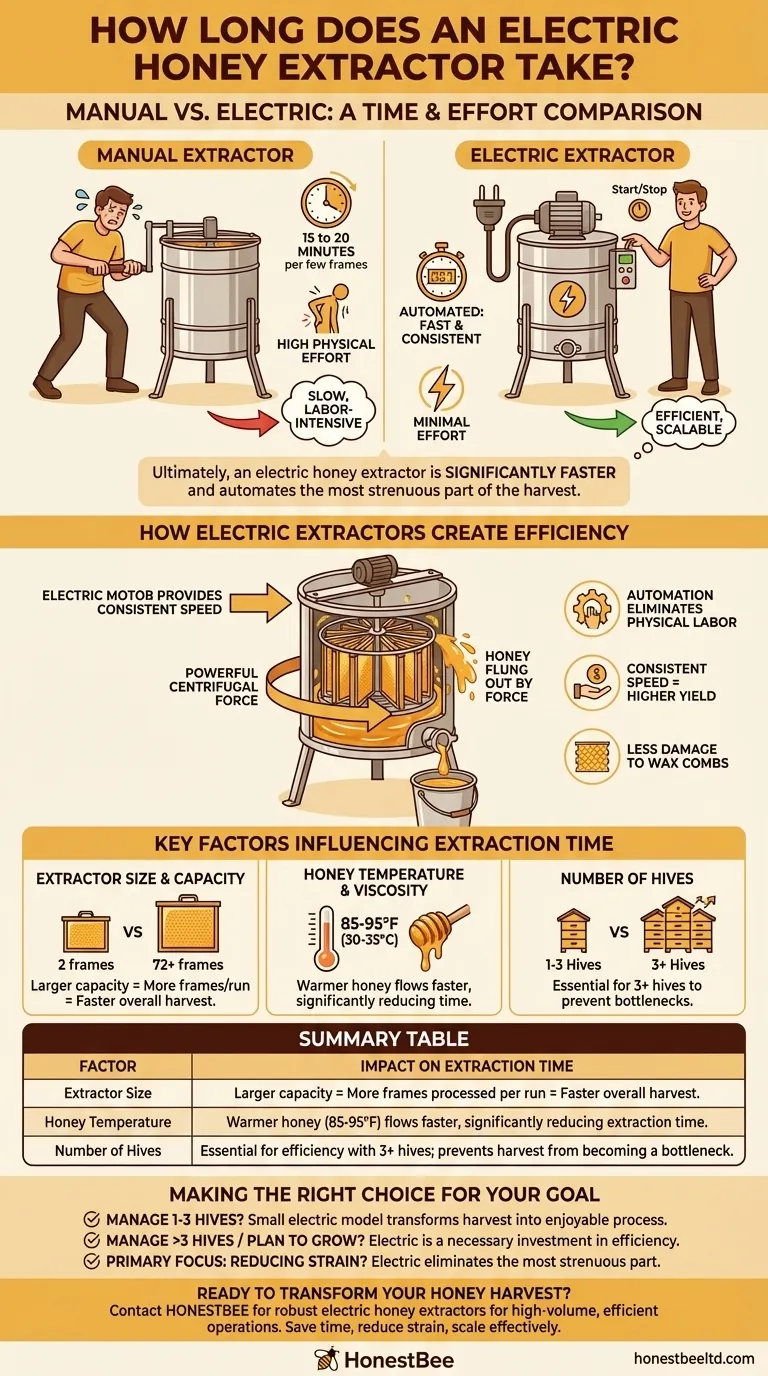
Related Products
- HONESTBEE 72 Frame Industrial Electric Honey Extractor for Beekeeping
- Commercial Electric 12 Frame Honey Extractor Spinner Motorized Honey Extractor
- 40 Frame Commercial Electric Honey Extractor for Beekeeping
- 8-Frame Electric Self-Reversing Honey Extractor Spinner for Commercial Honey Extraction Equipment
- electric honey extractor honey centrifuge 3 frame honey extractor stainless steel honey frame extractor
People Also Ask
- Can a manual extractor be upgraded to an electric one? Save Labor & Boost Efficiency
- Why do beekeepers have to lift a lot of weight at the end of a growing season? The Reward of a Heavy Harvest
- How is honey harvested from Langstroth hives? A Guide to Efficient, Comb-Preserving Extraction
- Why is preserving honeycomb integrity important, and how do automated extractors help? Boost Hive Health & Honey Yields
- What is the energy consumption like for automatic honey extractors? Maximize Your Harvest Efficiency


